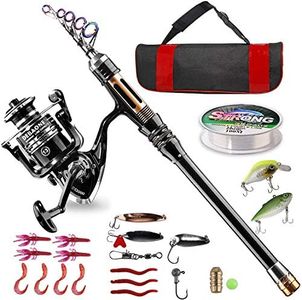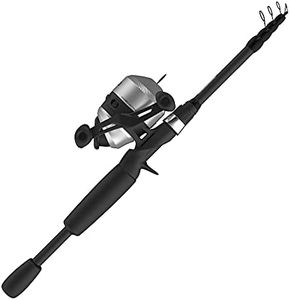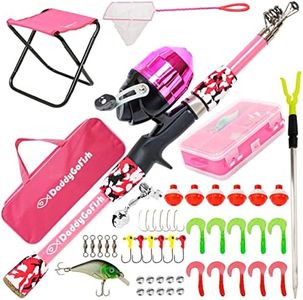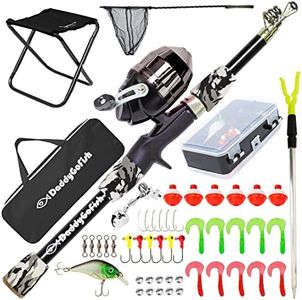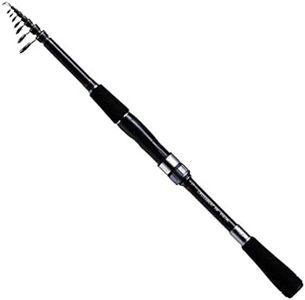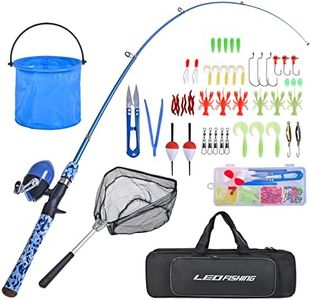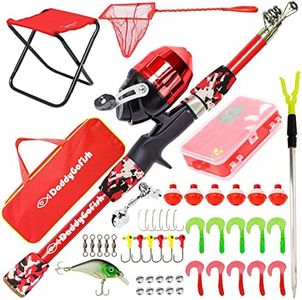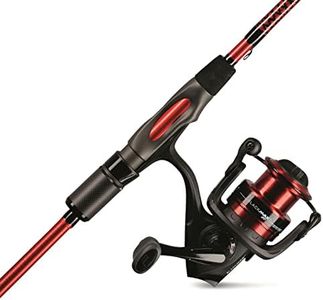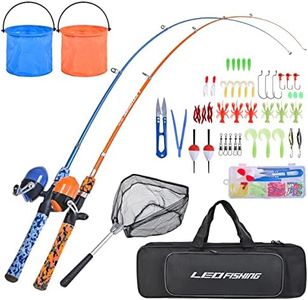We Use CookiesWe use cookies to enhance the security, performance,
functionality and for analytical and promotional activities. By continuing to browse this site you
are agreeing to our privacy policy
10 Best Youth Fishing Rod
From leading brands and best sellers available on the web.Recommended lists
Buying Guide for the Best Youth Fishing Rod
Choosing a youth fishing rod can make all the difference in helping young anglers enjoy and succeed at fishing. It's important to pick a rod that is easy to handle, suited to your child's age and strength, and appropriate for the intended type of fishing. By understanding the key features, you can make a choice that encourages learning while also matching their growing skills.Rod LengthRod length is the measurement from the butt of the handle to the tip of the rod. Shorter rods (about 3 to 5 feet long) are better for younger kids because they are lighter and easier to control. Slightly longer rods (5 to 7 feet) are suitable for older children or those with some fishing experience, as they allow for longer casts and better leverage. When picking a rod length, consider your child’s age, arm length, and the typical fishing environments (such as shore, dock, or boat fishing).
Rod WeightRod weight refers to how heavy the rod feels and how much weight it is designed to handle. Light or ultralight rods are generally best for youth because they are easier to handle and less tiring over long periods. Heavier rods should be avoided as they can make casting and holding the rod uncomfortable for children. Select a rod that your child can comfortably hold for a while and that matches the type of fish they are likely to catch, which is often smaller species for young anglers.
MaterialFishing rods are commonly made from fiberglass, graphite, or a combination of both. Fiberglass rods are more durable and forgiving—ideal for youth who might be rough with their gear. Graphite rods are lighter and more sensitive but can be more fragile. For most children, fiberglass or composite rods are preferable as they offer a good balance of sturdiness and usability for beginners.
ActionAction describes how much and where the rod bends when pressure is applied. Slow action rods bend throughout, while fast action rods bend mostly near the tip. Medium action rods are a balance between both. For youth, a medium or slow action is often best: it is more forgiving of mistakes and makes it easier to cast and reel in fish. Pick the action based on your child's coordination and the fish they are aiming to catch—a moderate action is a great all-around choice for beginners.
Handle Size and GripThe handle is where the angler holds the rod. For youth fishing rods, the handle should be short and appropriately sized for smaller hands. Grips made of foam or soft rubber are comfortable and help prevent slipping. Check that your child can wrap their hand around the grip easily and hold it securely without straining. A good handle fit is crucial for making fishing enjoyable and reducing fatigue.
Reel TypeFishing rods for youth generally come with either a spincast or spinning reel. Spincast reels are very user-friendly and prevent tangles, making them ideal for younger or beginner children. Spinning reels take a bit more practice but offer greater control as kids gain skill. Choose a spincast for beginners and consider a spinning reel if your child wants to advance or has previous fishing experience.
